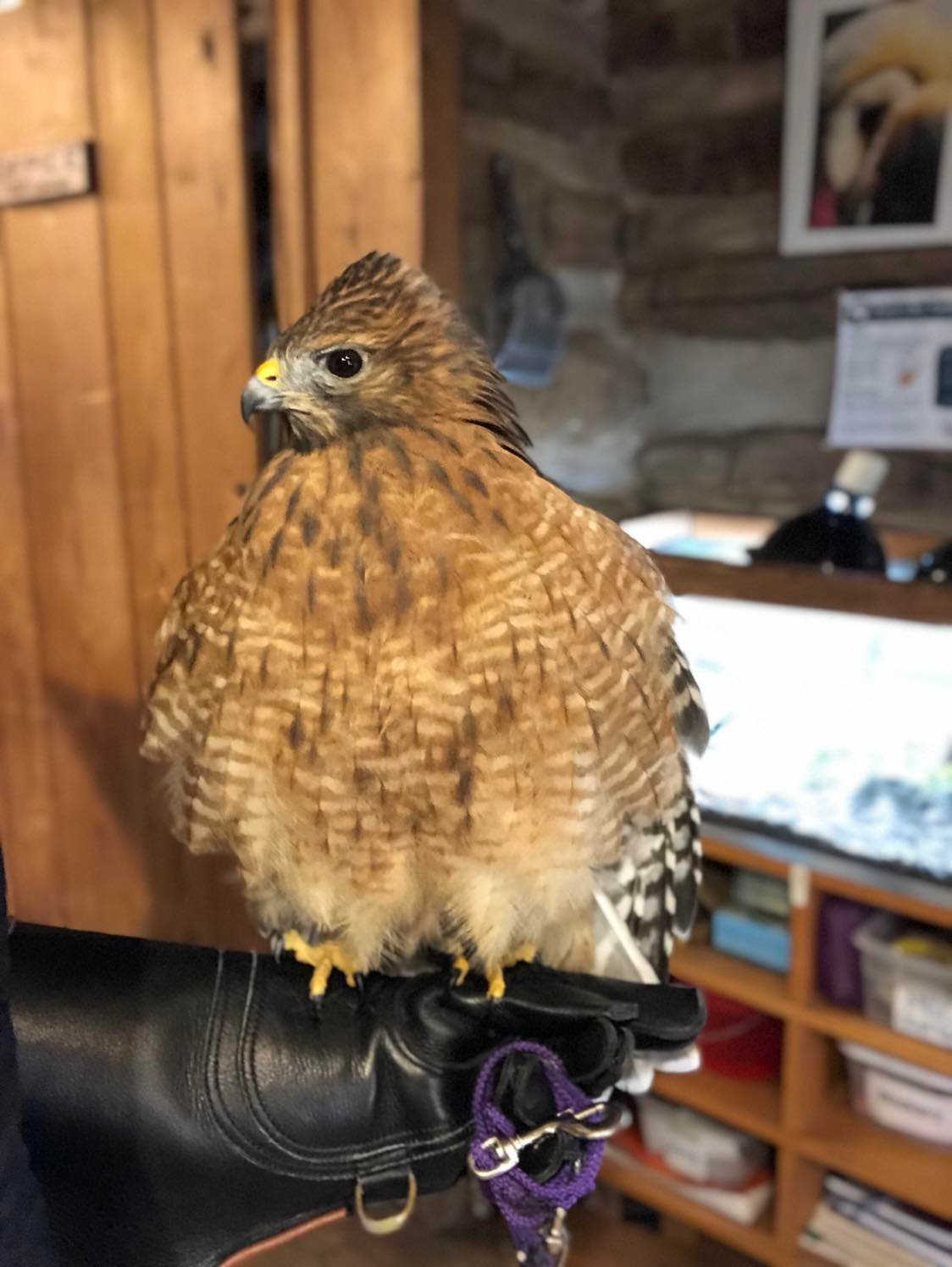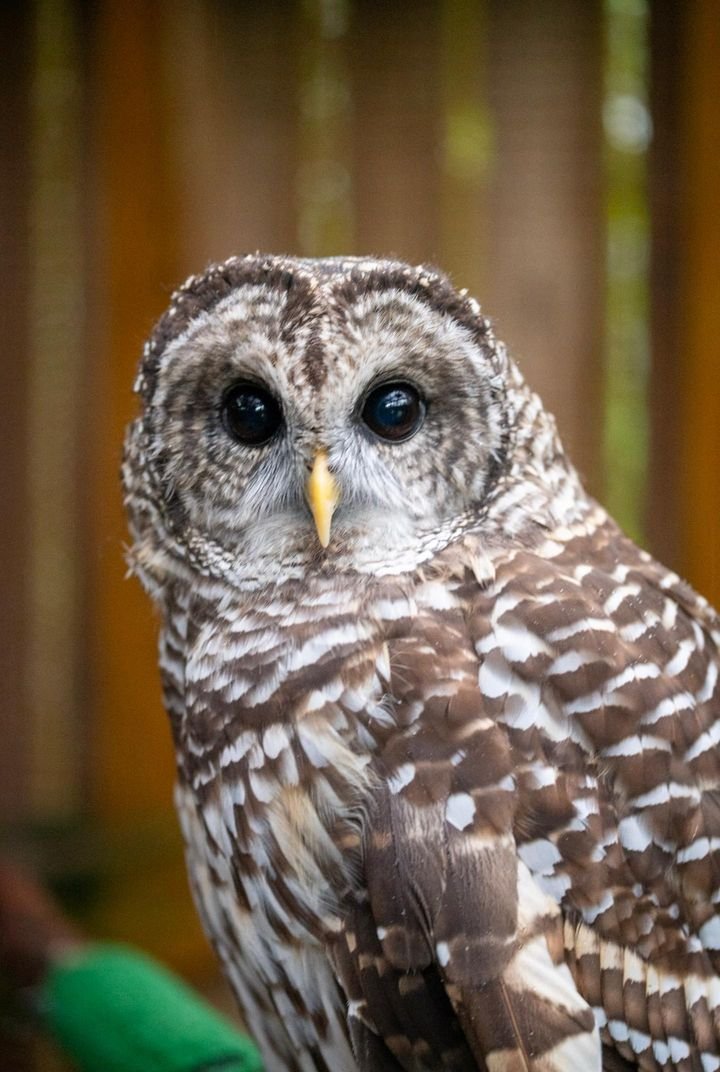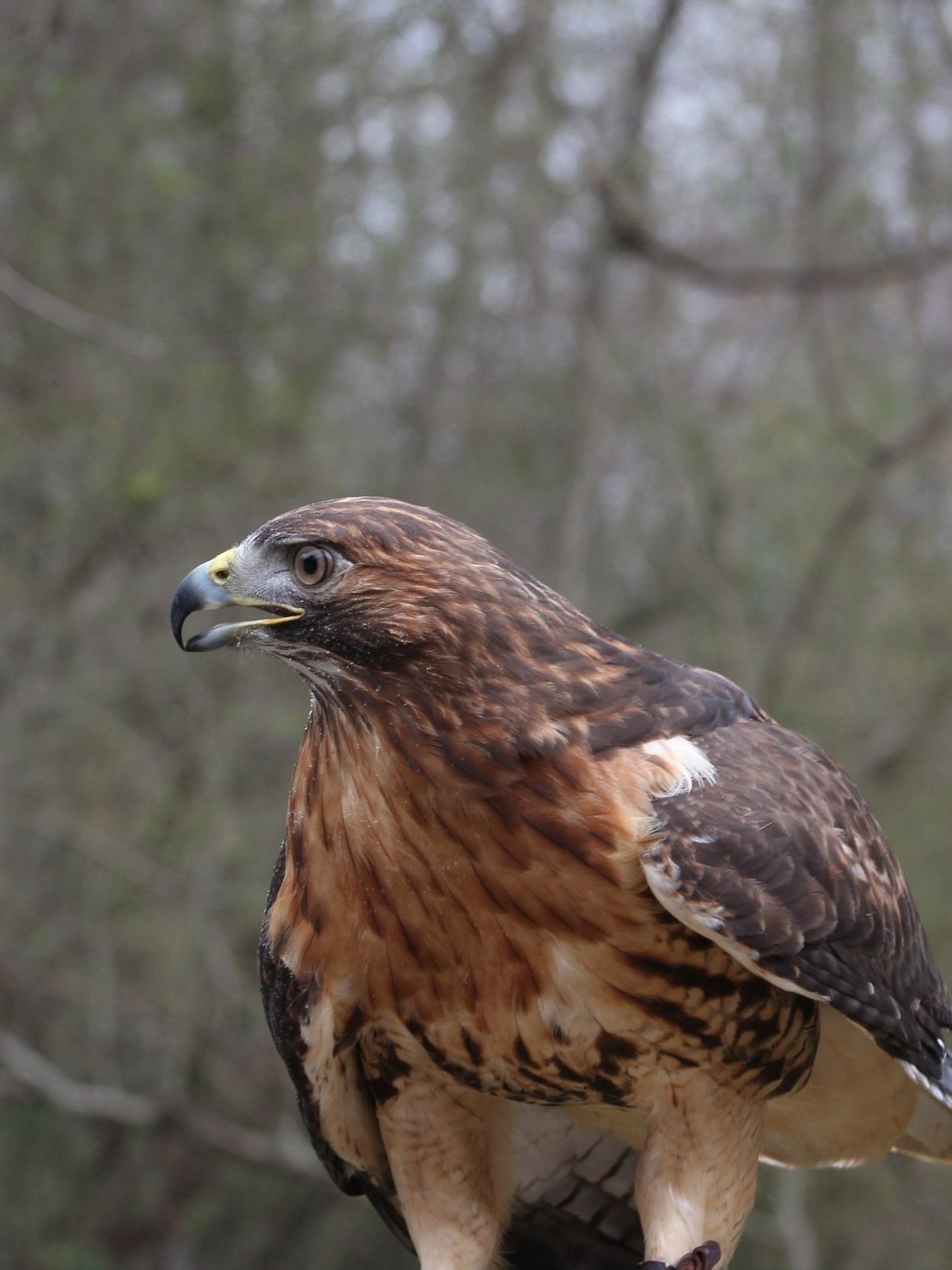PWC’s 2024 Fly-Thru: A Drive-Through Wildlife Experience
thursday, April 18th from 5:30-7:00pm!
We’re so excited about our FREE Fly-Thru coming up on Thursday, April 14th from 5:30-7:00pm! Keep checking this page and our Facebook event for details as we get closer to the event.
Below you’ll find:
Best Tips for a Great Fly-Thru Experience
We’re so excited you’ve decided to spend your evening with us here at Piedmont Wildlife Center.
1) Follow directional signs once you turn on Leigh Farm Road. Surprise! The Fly-Thru is not happening at Piedmont Wildlife Center’s home location. We have moved the event to the front parking lot of the Palladian complex. Stay in your right lane once you turn from the stop light and you won’t miss it! Make sure you are in line by 6:30pm in order to enter the Fly-Thru.
2) This or That. This Fly-Thru has 2 lanes of animals. While the lines are nearly identical, you’ll be directed to take the left or right lane once you enter the parking lot. Scan the QR code from one of our volunteers to learn about the specific animals you’ll meet in your lane.
3) Move forward when the car in front of you moves! Refer to the FAQ’S from your QR code to learn more about the animals you’re meeting. We’d like to welcome as many new friends as possible to our Fly-Thru so be sure to keep up with the car in front of you!
4) Take plenty of pictures and use the #piedmontwildlifecenter so we can find them after the event!
AMBASSADOR Animal FAQ
Shelly, the eastern female box turtle +
Why is Shelly at PWC?
Shelly came to PWC from a prior hoarding situation. She has never been in the wild and has lived with humans her whole life. She was born sometime in the 80's.
What do she eat?
Leaves, fruits, vegetables, insects
How old will she get?
In the wild they live for about 25 to 30 years, however in captivity they can live over 80.
How do you tell boys and girls apart?
Boys tend to have bright orange or red eyes, bright red or orange on their skin and shell, and have an indentation of the bottom of their shell. Girls tend to be brown and have less bright shells and eyes.
Can they come out of their shell?
No, a turtle’s shell is attached to its spine.
What are predators of box turtles?
Raccoons, skunks, coyotes, foxes, snakes, and owls.
Willow, the red-shouldered hawk +
Why is Willow at PWC?
Willow was hit by a car and sustained a number of injuries, including a fractured radius, a fractured ulna, and a fractured metacarpus. Due to the severity of her injuries, she never regained full flight and was unable to be released back into the wild.
What does Willow eat?
In the wild, Willow would eat small mammals, frogs, snakes, and small birds.
What is her wingspan?
It will be 3.5 feet.
How big are her talons?
1.2 inches
How can you tell a red-tailed hawk from a red-shouldered hawk?
Red-shouldered hawks are smaller than their red-tailed cousins. From below, red-shoulders have reddish and white barring across their chests and more prominent white and black striping on their tails, while red-tails have whiter chests without the horizontal barring and little to no black on their tails. Another difference is their calls. Red-shoulders call frequently and sound similar to gulls, while red-tails are less vocal and give out the loud, strong single note call that is used for eagles in movies.
Pumpkin, the Virginia Opossum +
What do opossums eat?
Opossums are omnivores. They rely on their nose and ears to find food. Their nose can track the smells of fruit, mushrooms, carrion, and unfortunately litter. Opossums are often hit by cars because the smell of litter draws them to the side of roads. Their ears are sensitive enough to hear crawling insects in bark. Through their diet, they help us control tick and venomous snake populations.
Do opossums dangle from their tails?
Virginia opossums do not spend long periods dangling from their tails. A full-grown opossum can weigh between 7-10 pounds which is too much weight for their tails to reliably support. However, their tails are semi-prehensile.
When are opossums active?
Opossums are nocturnal. Their pupils are permanently dilated. So, they have excellent vision at night, but poor vision during the day. However, female opossums can have upwards of 12 joeys! So, it is not uncommon to see female opossums active during the day in search of food.
Do opossums carry rabies?
It is very unlikely that an opossum can carry rabies. Since rabies is a virus, it requires a warm host to reproduce. Opossums only have body temperatures of 94 degrees Farhenheit and therefore cases of rabies are rare.
Are opossums and possums different?
Opossums are the species of marsupials native to North and South America. They are larger mammals with pointed noses and bald tails. Possums are marsupials native to Australia and other contries such as New Guinea. They are smaller, tend to have rounder faces and have fur on their tails. Sugar gliders are an example of opossums.
Kellogg, the corn snake +
What do snakes eat?
Rodents, eggs, young birds, and potentially young rabbits.
How big can snakes get?
Depending on the species, snakes can get to 5 feet.
Can they smell without their tongues?
Yes, snakes have nostrils. However, snakes also have a special smelling organ on the roof of their mouth and that is more sensitive than their nose. By using their tongue, the snake sends signals through this organ which allows the brain to not only identify prey, but also which direction the snake should go to follow their prey.
Are they deaf?
Snakes do not hear sounds like we do, because they do not have ears like we do. However, they are tuned to vibrations and can feel of the vibrations of low-frequency sounds.
How old can they get?
They can live an average of 13 years in the wild, but have been known to reach 20 in captivity.
How often do they shed?
The frequency of snake shedding depends on its age. Young snakes may shed once every two weeks, while older snakes may shed once every couple of months.
What are their predators?
Foxes, owls, hawks, raccoons, opossums, and other snakes
Apollo, the barred owl+
What do the barred owls eat?
In the wild, they would eat mice, squirrels, birds, frogs, snakes, lizards, and small opossums.
How long can Barred Owls live in the wild?
10 years or slightly more in the wild, but upwards of 23 years in captivity
What is a barred owl's wingspan?
3.5 feet
How many babies can Barred Owls have per year?
They can lay anywhere between one to five eggs per year, but typically only raise two or three young to the juvenile stage.
**Why is a barred owl's face round? **
Since owls hunt at night, they rely on sound to find their prey. The round shape of their face acts like a satellite dish to collect the noise and funnel it toward the owl’s ears.
When are owls like the barreds most active?
Unlike many other owls which usually are nocturnal, many consider Barred owls to be crepuscular, meaning that they are active at both dawn and dusk.
Katara, the red-tailed hawk (if Willow is unavailable) +
What does Katara eat?
In the wild, Katara would eat mice, squirrels, rabbits, snakes, turtles, and smaller birds.
How big is Katara's wingspan?
4 feet
Why is her stomach lighter than her back?
Many birds have a form of camouflage called countershading. If a predator is above them, their dark backs enable them to blend into the ground below and if the predator is below them, their light stomachs blend in with the sky.
Why is Katara doing when she jumps off the handler's glove?
When a birds jumps off the glove, it is called baiting. This can be done for several reasons; the two most common are either a desire to readjust her feet or because she is slightly uncomfortable.
**In the wild, how many babies would Katara have? **
Each year, red-tailed pairs can lay 1-5 eggs.
Car Activities
Click on each button to find activities to do while you’re in line for the Fly-Thru!
Stay Connected with PWC
Follow us on social media +
Show your support with PWC T-shirts +
Check out our selection of t-shirts, all designed in house!
Come work or volunteer with us! +
- Volunteer to help take care of the animals
We offer volunteer positions based on availability as well as yearround internships with our Education and Conservation teams.
Bookmark us for fall and winter programming +
We're thrilled to offer outdoor childcare for students around the Triangle. We aim to encourage children's natural curiousity about the natural world and provide a break from technology.
Groups meet on Tuesdays and Thursdays for spring and fall semesters.
Ambassador Connections +
- Invite the animals to your classroom!
PWC visits schools, camps and various locations year-round with our ambassador animals!
- Book an Owl Bomb for your office or classroom!
We'll bring some much needed relief to your virtual meeting or provide a fun learning opportunity. Book yours for the upcoming school year! Spots will go quick!
Sponsoring an ambassador ensures that we will continue to be able to provide quality care, food, and enrichment. You'll receive letters from your selected ambassador for 3 months or a year, depending on your sponsorship selection.
Citizen Science +
Being a Turtle Trekker helps us monitor eastern box turtle populations here in North Carolina so we can help protect them and their natural habitats.
Join our Board of Directors +
- Email our Executive Director, Karen McCall, for more details.








